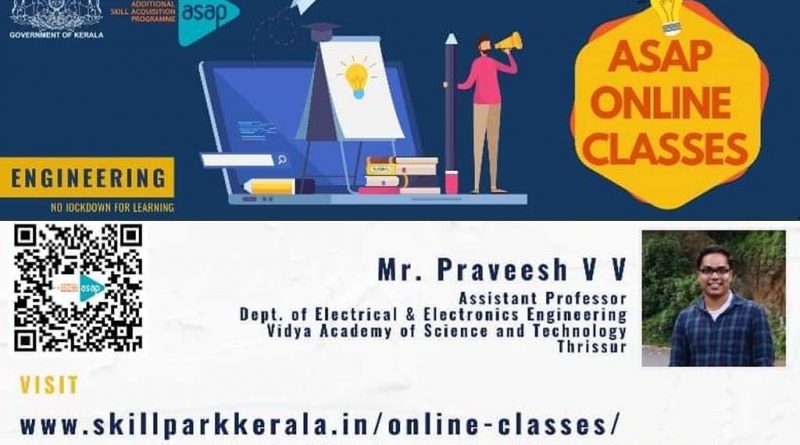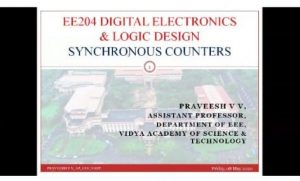EEE faculty member delivers online classes under ASAP/KTU

 Mr Praveesh V V (AP, EEE Dept) delivered a lecture on the topic “Design of Synchronous Counters” in the series of online classes being conducted by ASAP and APJAKTU, Kerala. The lecture was delivered on on 8 May 2020 and was targeted at fourth semester B Tech (EEE) students. The record of the online class will be available at the following link: http://www.skillparkkerala.in/online-classes.
Mr Praveesh V V (AP, EEE Dept) delivered a lecture on the topic “Design of Synchronous Counters” in the series of online classes being conducted by ASAP and APJAKTU, Kerala. The lecture was delivered on on 8 May 2020 and was targeted at fourth semester B Tech (EEE) students. The record of the online class will be available at the following link: http://www.skillparkkerala.in/online-classes.
Great feedback on the lectureThe Editorial Team of News & Events would like to reproduce verbatim a feedback on the lecture delivered by Mr Praveesh from a practicing engineer. Hello Praveesh Sir, Hope you’re doing good! I’m an alumni of Govt Model Engineering College, Thrikkakara. Today I came across your lecture on counter design in the Digital Design series of classes on Skillpark Kerala website, and decided to give it a go as digital design has always been an interesting topic for me. 🙂
I was impressed with the way you explained things – systematically, starting from truth table design to gate/flop level implementation. The subject was also covered in breadth given the time available, covering popular counter designs in detail.
I loved the class, and felt like contributing a little on how you could bring an application level perspective into the subject. Given that this is an important topic in digital design, with it’s impact reaching into areas like FSM encoding, one thing I would’ve loved to be included in the discussion was the application of various counters, or rather why there is a variety of counters available when a simple one can do the trick 🙂
Choosing the right counter for an application, or even the right FSM encoding, is an important step in designing a system for industrial or commercial applications. For instance, choosing a gray counter over a normal counter would reduce the number of transitions happening in a clock cycle. This would in turn reduce the activity in the circuit, especially in large counters, thereby consuming less power. Such techniques are widely used in low power designs. Another example being, using a one-hot encoding makes the counter more rugged, since it is easy to identify states that are not valid, and reset/redirect the counter accordingly. They are used in safety-critical systems. There is always a trade-off in whether you want to go with ruggedness or performance as opposed to power consumption.
I hope these ideas will be helpful to you to instil a different perspective in students, as to how the concepts you learn in class will apply to a real-world design. This was one thing I felt like I should’ve been exposed to in my college days, as it would’ve helped me tackle problems better at the start of my career. They do come slowly with experience, but a little exposure during college time would be really motivating 🙂
Thank you for taking your time to read my humble opinion. And a huge thanks for taking the time and effort to spread knowledge on an open platform at a time like this. I’m sure a lot of students will benefit from this initiative at a difficult time as now!
Thank you!
Respectfully,
Rahul Anilkumar
|
